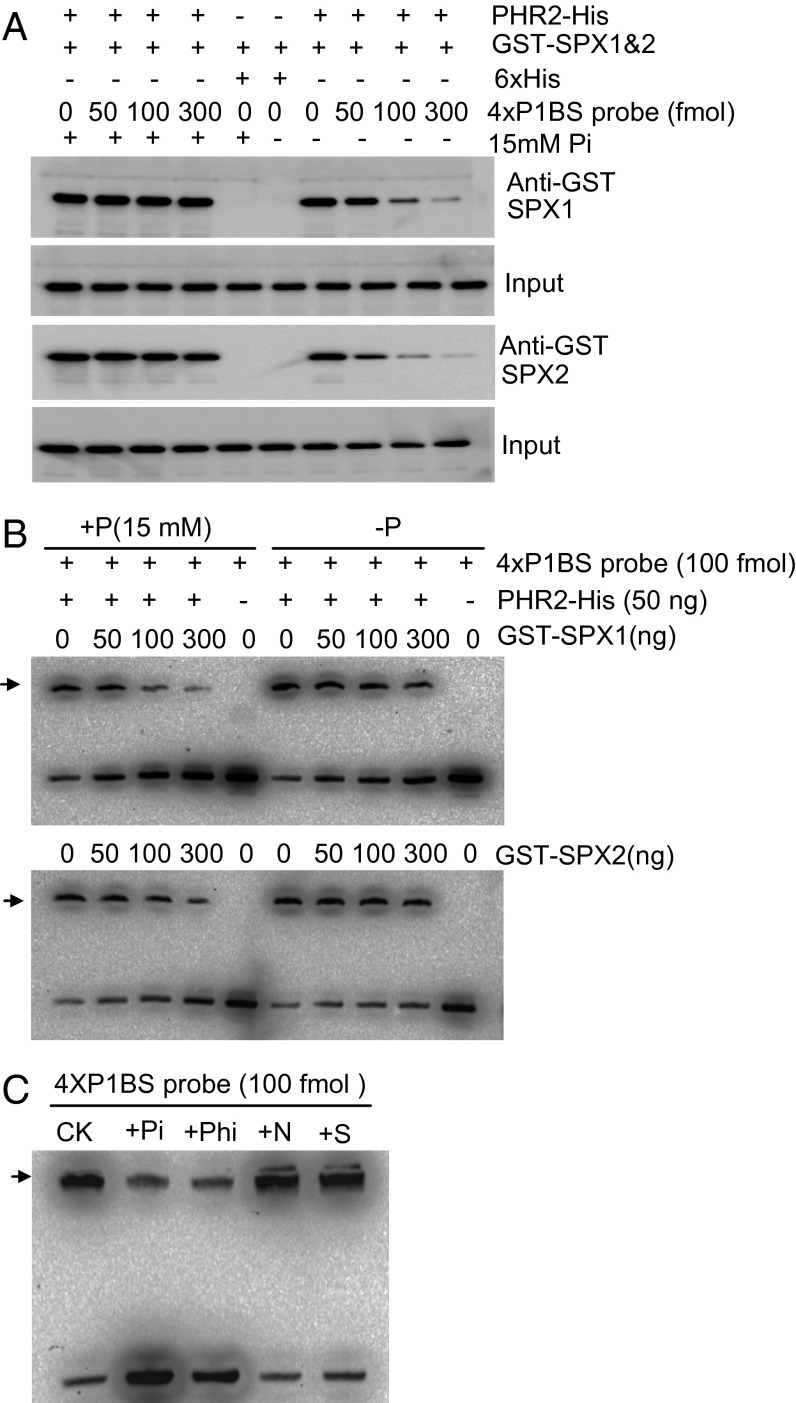Fig. 5.
SPX1 and SPX2 inhibition of PHR2 binding to P1BS is Pi-dependent in vitro. (A) Pull-down assays indicate that the interaction of SPX1 and SPX2 with PHR2 is displaced by the P1BS probe in vitro in −P conditions but not in +P conditions (with addition of 15 mM NaH2PO4). Purified bacterially expressed PHR2-His (50 ng), 6× His (50 ng), and GST-SPX1 and GST-SPX2 (250 ng) proteins were used in each lane, with varying amounts of 4× P1BS probe. (B) EMSA showing that SPX1 and SPX2 inhibit PHR2 binding to the 4× P1BS probe in a dose-dependent manner in +P conditions but not in −P conditions. We used PHR2-His (50 ng) with varying amounts of GST-SPX1 and GST-SPX2 (0, 50, 100, and 300 ng) proteins and biotin-labeled 4× P1BS probe (100 fmol). (C) EMSA showing specificity of the Pi effect on SPX1 inhibition of PHR2 binding to P1BS. Each reaction contains PHR2-His (50 ng), GST-SPX1 (250 ng), and biotin-labeled 4× P1BS probe (100 fmol). For controls (CK), 50 mM NaCl was added to EMSA buffer; for +Pi treatment, 15 mM NaH2PO4 and 5 mM NaCl were added; for +Phi treatment, 15 mM NaH2PO3 and 5 mM NaCl were added; for +N treatment, 45 mM NaNO3 and 5 mM NaCl were added; and for +S treatment, 22.5 mM Na2SO4 and 5 mM NaCl were added. In B and C, the PHR2–4× P1BS complex is indicated (black arrow).

